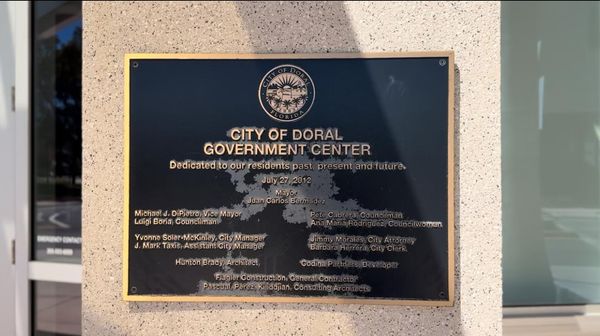
Hurricane Helene devastated parts of the southeastern U.S. by bringing flooding rains. The end result? Water treatment systems were destroyed, resulting in no safe water to drink.
For example, the North Fork Water Treatment Plant supplies most of the drinking water to Asheville, North Carolina. Built in the 1970s, it was known for its clear water, which flows into the plant from a large reservoir.
But then Helene hit, along with her 14 inches of rain. Even backup water lines, installed 25 feet underground as a redundancy after damages in 2004, were broken as a result of Helene.
Asheville’s woes highlight that the age of our nation’s water infrastructure - combined with the growing effects of climate change - can push systems to collapse. That means what has happened in Asheville, without mitigation efforts, could play out in many more communities across the country.
In 2022, for instance, residents in Jackson, Mississippi, lost reliable tap water after rains caused the city’s already decrepit water treatment plant to fail.
Fixes Will Be Expensive
Many of the water systems in urban areas are in similar situations to Asheville, caused by a lack of funds to pay for expensive fixes.
Asheville’s plant doesn’t have a sedimentation-removal system. Adding one would cost about $100 million — a large chunk of Asheville’s $250 million annual budget. For now, the city plans to add aluminum sulfate and sodium hydroxide to the reservoir to cling to the sediment and get it to sink to the bottom, clearing up the water.
The Environmental Protection Agency (EPA) estimates it would take $625 billion over the next 20 years to get the nation’s public water systems up to snuff. That’s up from roughly $300 billion in 1995 (both in 2021 dollars), with the bulk of the funds going to water distribution.
But the EPA assessment doesn’t really tell the whole story.
It is based on surveying public water systems and is heavily focused on the systems’ most immediate needs — such as replacing water distribution lines that contain lead. Future needs, such as those triggered by climate change (temperature extremes, droughts, flooding rains), appear nowhere in the EPA assessment.
Very few water utilities have climate adaptation plans in place because the federal government doesn’t require utilities to have such plans. Also, water utilities base their risk assessment on weather history in their region, which climate change is upending.
And, as with many critical industries in the United States, there’s a growing worker shortage.
The EPA survey found that roughly 35% of small water systems, and 50% of medium and large systems, had difficulty hiring employees or obtaining contracted workers. This shortage will only grow worse as more of the current workforce retires. Estimates are that 30% to 50% of the water industry workforce is retiring in the next decade.
AI Water Demand
Add these water woes to the increasing demand for water from AI-related data centers, which are growing like weeds. I wrote in a recent article about how artificial intelligence (AI) and cloud computing data centers are sending water demand soaring. Water is used by data centers to cool computing equipment, as well as in most forms of power generation.
Already, water consumption by dozens of facilities in Virginia’s “data center alley” has jumped by almost two-thirds since 2019! The vast warehouses full of computers and networking gear used about 1.85 billion gallons of water in 2023 versus 1.13 billion gallons in 2019.
Overall, U.S. data centers consumed more than 75 billion gallons of water in 2023. Bank of America estimated in November that data centers are already the 10th-largest water consumer in the U.S.
All of this adds up to being a great time to be in the water treatment business.
One Stock to Buy
One company squarely focused on water is Xylem (XYL). In just a decade, the company has grown from a pump manufacturer to a leading global water solutions firm.
Xylem looks set to benefit from macro trends in water conservation and drinking water sanitation, as well as from the U.S. Inflation Reduction Act, Infrastructure Investment and Jobs Act, and regulations in Europe and the U.K.
In particular, its Water Infrastructure division is benefiting from firming global demand for water transportation and treatment systems.
Last year's $7.5 billion acquisition of the water treatment company, Evoqua Water Technologies, should also help to accelerate growth by providing additional services and solutions for Xylem customers. The merger created the world’s largest pure-play water technology firm.
Updated EPA rules on PFAS (forever chemicals) and other contaminants in drinking water present an additional demand catalyst, as Xylem uses its Evoqua acquisition to capture pollutants and develop innovative technologies that enable the detection and destruction of harmful substances.
Xylem is also using partnerships and other smaller acquisitions to expand its offerings, particularly in the utility and industrial end markets.
XYL stock is a buy anywhere below its 52-week high of $146.








